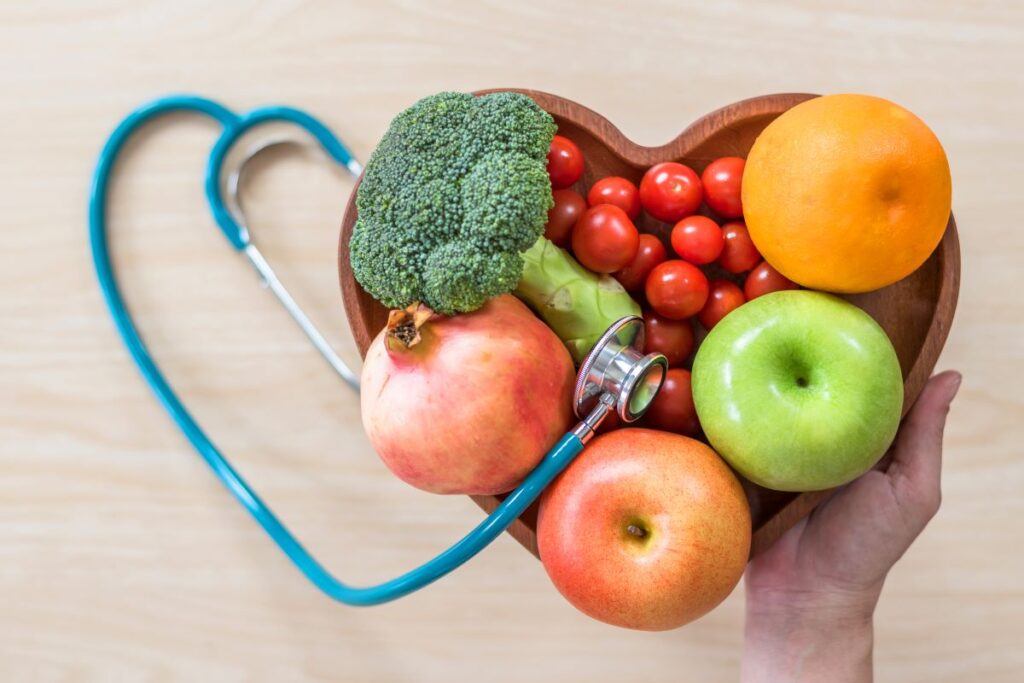Eating healthy doesn’t have to be a complicated, overwhelming chore. Forget the restrictive diets, the confusing jargon, and the endless hours of meal prep. In today’s fast-paced world, finding ways to incorporate nutritious foods effortlessly is key to maintaining a sustainable, healthy lifestyle.
This comprehensive guide breaks down how to make healthy eating a natural, easy part of your daily routine. We’ll explore practical strategies, simple swaps, and mindsets that will help you prioritize your well-being without sacrificing convenience or enjoyment.
The Myth of “Perfect” Eating
Before diving into the tips, let’s address a crucial concept: healthy eating is not about perfection.
The pressure to eat “clean” 100% of the time often leads to burnout and a cycle of restriction and overindulgence. A sustainable approach focuses on consistency over perfection. It’s about making better choices most of the time.
Think of it as a spectrum. Every healthy choice you make—whether it’s adding an extra vegetable to your dinner or swapping a sugary drink for water—moves you in the right direction. The goal is progress, not perfection.
The Foundation of Effortless Healthy Eating
The secret to effortless healthy eating lies in preparation and simplification. By setting up your environment and your routine for success, you minimize decision fatigue and maximize convenience.

1. Simplify Your Shopping List
A chaotic shopping trip leads to chaotic eating. Simplify your grocery list by focusing on whole, unprocessed foods.
- The Perimeter Rule: Most grocery stores place fresh produce, meats, dairy, and eggs around the store’s perimeter. Shop here first. The center aisles often contain processed, packaged foods high in sodium, sugar, and unhealthy fats.
- Focus on Staples: Keep your pantry stocked with basic ingredients that can be used in multiple meals: oats, brown rice, quinoa, lentils, canned beans, frozen vegetables, and nuts. Having these on hand reduces the need for last-minute, less healthy takeout options.
2. Embrace Smart Meal Prep (Without the Stress)
Meal prep doesn’t mean cooking every meal for the entire week on a Sunday. It’s about doing some preparation to save time later.
- Prep Components, Not Meals: Instead of cooking full meals, prepare individual components. Roast a batch of vegetables, cook a large portion of grains (like brown rice or farro), and grill some chicken or fish. These components can be mixed and matched throughout the week.
- Chop Now, Eat Later: The biggest barrier to cooking is often the prep work. Wash and chop vegetables (carrots, celery, bell peppers) right after grocery shopping. Store them in airtight containers. When you’re ready to cook, the hard part is already done.
3. The Power of “Batch Cooking”
When you cook, cook extra. This is one of the most effective ways to ensure healthy meals are always available.
- Double Your Recipe: If you’re making soup, chili, or a healthy stew, double the recipe. Eat one portion tonight and freeze the rest for a busy day next month.
- Cook for Tomorrow: Make enough dinner tonight to serve as tomorrow’s lunch. This eliminates the need to figure out a healthy midday meal during a busy workday.
Smart Strategies for Everyday Eating
Beyond the kitchen, applying simple strategies to your daily routine can make a significant difference in your nutritional intake.
4. Hydration: The Underrated Key
Often, we mistake thirst for hunger. Staying adequately hydrated can curb unnecessary snacking and boost metabolism.
- Water First: Before reaching for a snack, drink a large glass of water and wait 15 minutes. You might find your hunger dissipates.
- Flavor Naturally: If plain water is boring, add slices of lemon, cucumber, mint, or berries for natural flavor without added sugar.
5. Mindful Snacking
Snacks are not the enemy; poorly chosen snacks are. Healthy snacking can help maintain energy levels and prevent overeating at main meals.
- Skip the Pre-Packaged: Avoid highly processed chips, cookies, and candy bars.
- Opt for Whole Foods: Choose snacks that combine protein and fiber for sustained energy. Examples include:
- Apple slices with peanut butter
- Greek yogurt with berries
- A handful of almonds
- Hummus with vegetable sticks
6. The “One-Plate” Approach
When serving meals, adopt a simple visual guide for portion control and nutrient balance:
- 50% Vegetables/Fruits: Fill half your plate with colorful, non-starchy vegetables (broccoli, spinach, salad) and/or fruit.
- 25% Lean Protein: Dedicate a quarter of the plate to lean protein (chicken, fish, tofu, beans).
- 25% Complex Carbohydrates: The remaining quarter should be dedicated to complex carbs (brown rice, quinoa, sweet potatoes).
This method simplifies meal planning and ensures you get a good mix of macronutrients.
Easy Meal Ideas and Swaps
Making healthy food requires simple substitutions and go-to recipes that don’t require extensive cooking skills.

7. The Power of Smoothies
Smoothies are an excellent way to pack nutrients into a quick meal or snack.
- Focus on Greens: Start with a base of spinach or kale; you won’t taste them, but you’ll get a huge boost of vitamins.
- Add Protein and Healthy Fats: Use Greek yogurt, protein powder, avocado, or nut butter to make the smoothie filling.
- Go Light on Fruit: While fruit is healthy, too much can add excessive sugar. Balance it with vegetables.
8. Simple Ingredient Swaps
Small changes in ingredients can significantly improve the nutritional value of your favorite meals.
- White Rice to Brown Rice/Quinoa: A simple switch for more fiber and nutrients.
- Sourdough Bread/Whole Wheat over White Bread: Choose whole grains for better digestion and sustained energy.
- Vegetable Oil/Canola Oil to Olive Oil/Avocado Oil: Opt for healthy fats when cooking.
- Sour Cream to Greek Yogurt: Use plain Greek yogurt in sauces, dips, and baked goods for added protein and fewer calories.
9. The “Healthy Takeout” Strategy
Even on days when cooking isn’t an option, you can make smart choices when ordering out.
- Prioritize Grilled or Steamed: Look for grilled fish, chicken, or steamed vegetables rather than fried or heavy sauces.
- Request Sauces on the Side: This allows you to control the amount of sugar, salt, and fat in your meal.
- Swap Fries for Salad or Vegetables: Most restaurants offer a side salad or steamed vegetables as an alternative to french fries.
The Role of Mindset and Habits
Effortless healthy eating is less about willpower and more about establishing sustainable habits.
10. Listen to Your Body
Pay attention to your body’s hunger and fullness cues. Eat when you are hungry and stop when you are satisfied, not stuffed. This practice, known as intuitive eating, helps you regulate intake naturally without restrictive rules.
11. Practice “Additive” Nutrition
Instead of focusing on what you can’t eat, focus on what you can add to your plate.
- Add an extra serving of vegetables to your pasta.
- Add some seeds to your oatmeal.
- Add a handful of berries to your yogurt.
By focusing on adding nutrients, you naturally displace less healthy options without feeling deprived.
12. Don’t Fear “Treats”
A healthy lifestyle includes balance. Enjoying a piece of cake at a birthday party or a slice of pizza with friends doesn’t negate your efforts. When you allow yourself occasional treats without guilt, you are more likely to stick to your healthy routine long-term.
Conclusion
Making healthy eating effortless is about implementing small, consistent changes rather than drastic overhauls. By simplifying your grocery shopping, embracing smart meal prep, prioritizing hydration, and adopting a mindful approach to snacking, you can significantly improve your diet without the stress.
Remember, healthy eating is a journey, not a destination. Focus on progress, listen to your body, and enjoy the process of nourishing yourself. With these simple strategies, a healthier, more vibrant you is easily within reach.










